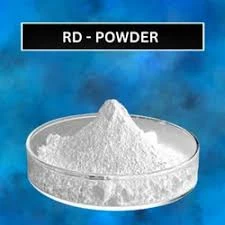
Sep . 30, 2024 03:18 Back to list
Hydroxyethyl cellulose formulation and applications in various industries and products
Understanding Hydroxyethyl Cellulose Properties, Applications, and Formulation
Hydroxyethyl cellulose (HEC) is a versatile and widely used polymer derived from cellulose, a natural polymer obtained from the cell walls of plants. Its unique properties make it a valuable ingredient in various industries, including cosmetics, pharmaceuticals, food, and construction. This article aims to explore the formula, characteristics, and diverse applications of hydroxyethyl cellulose.
Chemical Structure and Properties
Chemically, hydroxyethyl cellulose is synthesized through the reaction of alkali cellulose with ethylene oxide. This reaction introduces hydroxyethyl groups into the cellulose molecule, which enhances its solubility in water and improves its functional properties. The degree of substitution—the average number of hydroxyethyl groups added per anhydroglucose unit—affects the solubility and viscosity of the resulting product.
HEC is known for its non-ionic, water-soluble characteristics. This means that it does not dissociate into ions in water, which is significant for its stability and performance in various formulations. The solubility of HEC is influenced by factors such as temperature, concentration, and pH. Furthermore, it exhibits excellent film-forming, thickening, and emulsifying properties, making it a popular choice in many formulations.
Applications in Various Industries
1. Cosmetics and Personal Care In the cosmetics industry, hydroxyethyl cellulose is primarily used as a thickener and stabilizer in products such as shampoos, conditioners, lotions, and gels. Its ability to improve texture and provide a desirable consistency enhances the overall appeal of the products. Moreover, HEC is utilized in creating films for cosmetic applications, offering a smooth appearance and improved adherence on the skin.
2. Pharmaceuticals HEC finds extensive use in pharmaceuticals, particularly in controlled-release formulations. Its thickening property helps in the formulation of suspensions and gels, ensuring the uniform distribution of active ingredients. Additionally, it is used as an excipient in tablet formulations, enhancing the tablet's integrity and mechanical strength.
hydroxyethyl cellulose formula

3. Food Industry In food applications, hydroxyethyl cellulose serves as a food thickener and stabilizer. It helps in improving the texture of various food products, including sauces, dressings, and dairy items. HEC is recognized for its ability to retain moisture, making it an excellent ingredient for baked goods, extending shelf life and preventing staleness.
4. Construction The construction industry benefits from the use of hydroxyethyl cellulose as a performance additive in mortar, cement, and concrete products. It enhances workability and water retention, making it easier to apply these materials while improving adhesion to surfaces. Moreover, HEC helps in slowing down the drying process, which is crucial for achieving optimal strength and durability in construction applications.
Formulation Considerations
When formulating products with hydroxyethyl cellulose, several factors must be taken into account. The choice of HEC grade (which varies in viscosity and molecular weight) should align with the intended application, as different grades impart distinct properties. Additionally, it is essential to consider the compatibility of HEC with other ingredients in the formulation to avoid adverse reactions that could affect the final product's stability and efficacy.
The hydration process plays a critical role in the effective use of HEC. It should be allowed to fully hydrate in water to achieve the desired viscosity. This process typically takes place at room temperature, and mechanical stirring or mixing is often employed to ensure a homogenous solution. The viscosity of HEC solutions can be adjusted by varying the concentration and the degree of substitution, providing formulators with the flexibility needed to tailor products to specific requirements.
Conclusion
In summary, hydroxyethyl cellulose is a multifaceted ingredient with a range of applications across various industries. Its unique properties, derived from its chemical structure, allow it to function effectively as a thickener, stabilizer, and film-former. As industries continue to innovate and evolve, HEC's role is likely to expand, driving advances in product formulations and enhancing consumer experiences. Understanding the nuances of hydroxyethyl cellulose and its applications empowers manufacturers to leverage its potential and create superior products tailored to the needs of their markets.
-
Versatile Hpmc Uses in Different Industries
NewsJun.19,2025
-
Redispersible Powder's Role in Enhancing Durability of Construction Products
NewsJun.19,2025
-
Hydroxyethyl Cellulose Applications Driving Green Industrial Processes
NewsJun.19,2025
-
Exploring Different Redispersible Polymer Powder
NewsJun.19,2025
-
Choosing the Right Mortar Bonding Agent
NewsJun.19,2025
-
Applications and Significance of China Hpmc in Modern Industries
NewsJun.19,2025







